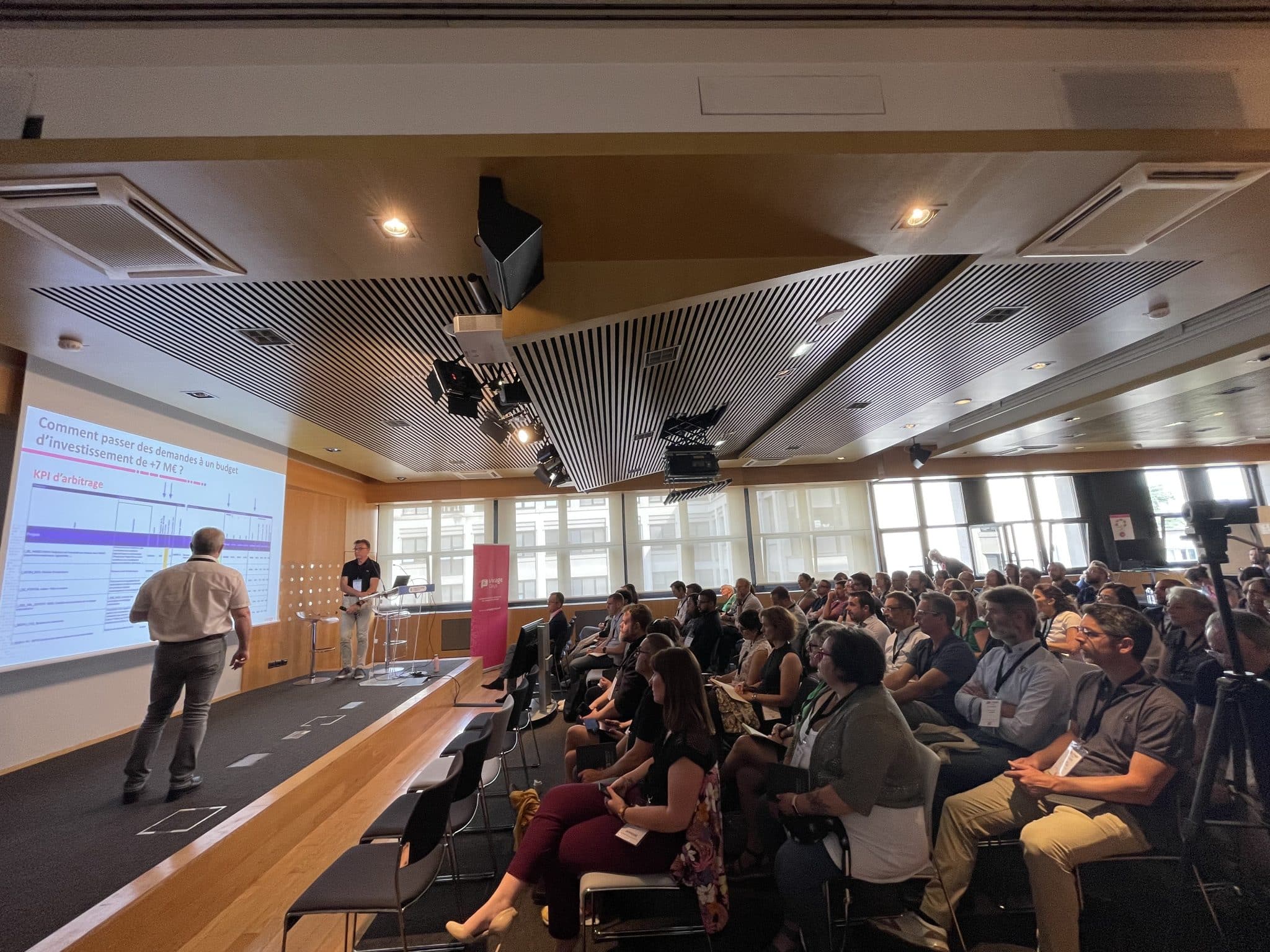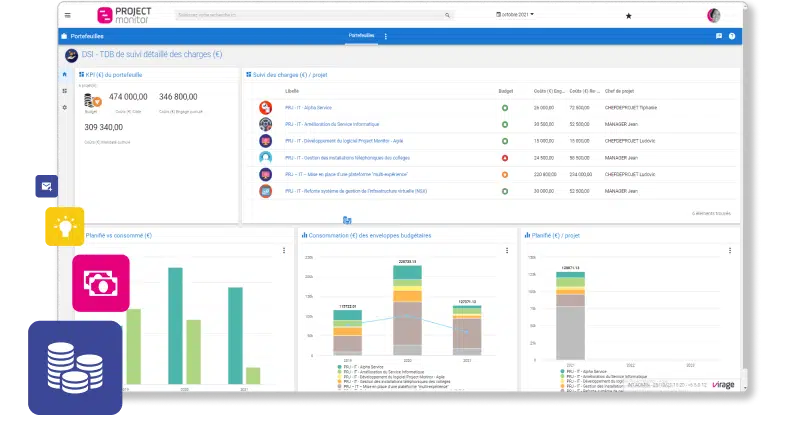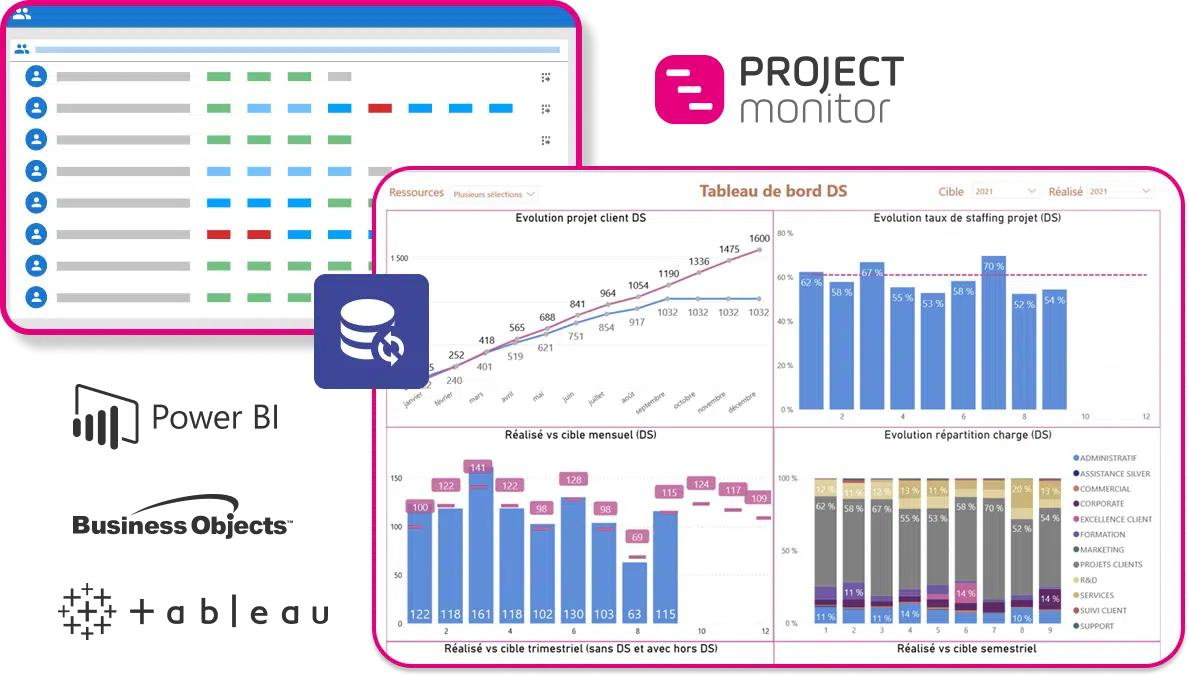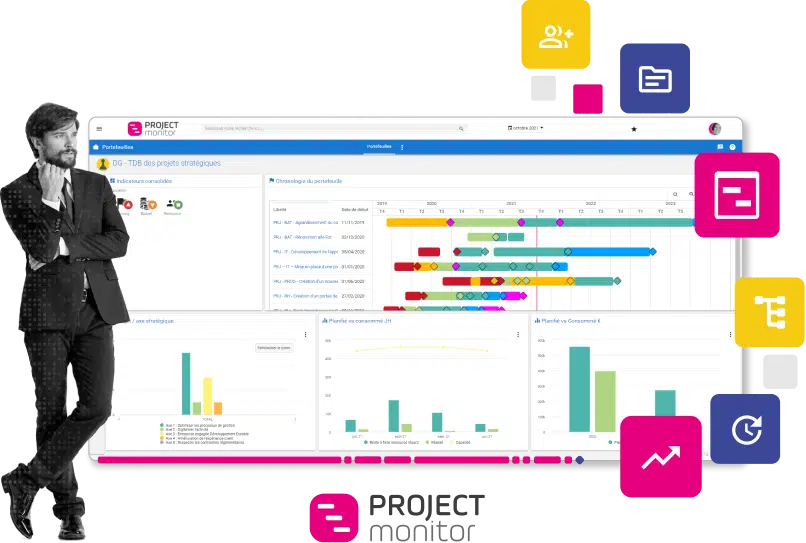Make budgetary decisions easier with the Datamart from Project Monitor
REX de l'Eurométropole de Strasbourg: "When projects and budget go hand in hand in the Datamart!
Budget arbitration means making choices about project prioritization, especially in the IT sector. More than ever, IT is inundated with an ever-increasing number of projects and requests for information system upgrades. Which projects deserve the most resources? How can we establish effective arbitration rules? How can we ensure that the overall budget is not exceeded?
In response to these questions, Eurométropole de Strasbourg shared its experience of using Datamart from Project Monitor, a project portfolio management software solution. The presentation took place at Virage Days, the annual event organized by Virage Group dedicated to project portfolio management. Participants had the opportunity to discover the Alsace metropolis' approach to budget arbitration and project portfolio management.
Find out in the following article:
- decision criteria for multi-project arbitration,
- the use of Project Monitor to support structured budget management,
- the advantages of the Galileo Datamart for budget arbitration.

Feedback from the Strasbourg Eurometropolis :
- Franck BARBI, Steering and Coordination Department Manager
- Didier GUYON, Infrastructure Department Manager, Digital and Information Systems Division
The challenges of IT project budget arbitration for the Strasbourg Eurometropole
Budget management for IT projects represents a crucial challenge for the Strasbourg Eurometropole. With a workforce of almost 8,500 people and the use of over 500 specialized applications, the diversity of professions and applications is extremely vast. Every year, this diversity inevitably generates a large number of projects and requests aimed at improving the information system.
Faced with the scale of these requests, the Eurometropole wondered: "How can we move from requests to an investment budget of +7M€?"
Decision criteria for multi-project arbitration
To organize the annual arbitration of IT project requests, EMS (Eurométropole de Strasbourg) relies on 4 KPIs:
- The resources
- Project value using the MAREVA method
- Business priorities
- The budget
It's this last KPI that we're going to focus on today.
When implementing Project Monitor, the Strasbourg Eurometropole adopted a budget management system linked to their financial tool, Coriolis.
Initially, financial monitoring was global, based on a general project estimate reduced to a single budget entry. This made it possible to :
- monitor project budget planning,
- monitor budget execution by assessing project commitments and invoicing.
However, this approach soon came up against its limits when it came to preparing budgets. The Eurometropole therefore decided to make greater use of the capacities of Project Monitor.
Use Project Monitor to support structured budget management
To this end, EMS has decided to distinguish between different types of expenditure:
- Software type
- Material type
- Type of service
- Type of maintenance
This classification facilitated budget preparation, making it easier for the Eurometropole to express its financial requirements for each type of project. This optimized budget planning.
Project Monitor enabled EMS to :
- categorize types of expenditure,
- create "envelopes" to organize annual budgets,
- an analysis axis to detail the budget programs used.
This has led to clear, fluid and efficient communication with the finance department.

Why has EMS decided to use the Project Monitor Datamart to facilitate budgetary arbitration?
It all started with the need to align budget and project decisions! The initial objective was therefore to list project requirements, skim the workload, estimate budgets, prepare arbitrations and clarify the portfolio's budget execution.
To provide answers and facilitate these decisions, it was crucial to connect four areas: Business, General Management, Finance and IT, using data "universes".
As Franck BARBI explained, the EMS needed to evolve its practices. That's why they chose to use Galileo's Datamart. The aim was to have a more detailed follow-up of constraints and decisions concerning project budgets, while making data manipulation and display more flexible.
Didier GUYON explained that EMS had decided to really change the way it used the Business Object universe: "We had to be able to cross-reference data from Coriolis and Project Monitor , because Excel reports were no longer enough for us, we had to gain in agility and the ability to cross-reference information".
What is the Galileo Datamart?
The Galileo datamart is the Business Intelligence module of Project Monitor.
This is a data warehouse containing data extracted from Project Monitor , enabling the creation of customized dashboards and indicators.
Data is organized in such a way that it can be easily queried, exploited and interrogated without in-depth knowledge of computer language.
In other words, the datamart is a relational database that helps you make decisions based on the data available at Project Monitor.
The objectives of the Datamart are to :
- enable fine, personalized data analysis,
- optimize business processes,
- improve decision-making,
- identify operational problems.
How does the Datamart work?
Data entered by your project teams on Project Monitor (schedule, timesheet, flash report) is extracted, then enriched with contextual elements (project metadata, time, timestamp, user).
The data is then recompiled in a format optimized for the BI model.
The datamart enables data to be cross-referenced with other relational databases in your information system.
The datamart also enables large-scale data analysis when coupled with BI (Business Intelligence) tools such as Power BI, Tableau or Business Object.

What changes with the introduction of the Galileo Datamart?
The benefits of Datamart
- Multidimensional analysis of your project portfolio
- Extend the data model with other relational databases in your information system (financial IS, HR IS, etc.)
- Develop advanced indicators for strategic decision-making
- Unlimited query capacity for your data scientists
- Combine heterogeneous data sources to create decision-support dashboards
- Easy consolidation of large data volumes
- Direct Dashboard access for end users
Concrete benefits identified by the Strasbourg Eurometropolis
- Project arbitration is easier to prepare
- No more time wasted searching through Excel reports
- Easier detection of data anomalies in projects
- More reliable budget arbitration
The implementation of this environment has also enabled EMS to track their decisions more accurately:
"We can now mix financial information, information Project Monitor and also be able to enter data directly into Excel in a totally automated way."
7 tips for building a decision-making system for your projects
- Start by responding to the highest value-added use cases
- Have a global vision of the use cases to be addressed, in order to create a relevant data model and avoid having to remodel the system in depth.
- Decide when the unit's system is initialized to archive project data
- Think "usability" to make report creation intuitive
- As the system is built, regularly re-test the performance of the reports created.
- Promote the added value of the reports created
- Implement a non-regression system test process during version upgrades of Project Monitor and Galileo.
Find out more about Project Monitor, project portfolio management software
Take control of your project portfolio
Project Monitor is all-in-one project portfolio management software. Our credo: advance your project management with a simple, adaptable and scalable PPM solution.
Starting with a portfolio of a hundred projects, the gains are spectacular! Project reporting divided by three, average project duration reduced by a third, project review twice as effective...
Facilitate your project management with a complete tool: portfolio, project model, dashboards, workload plan, schedule, Kanban, time tracking, request management, budget tracking, animation of project committees and governance bodies...
